Conquer Clutter Room by Room
By Peter Walsh

Organize a Master Bedroom
No room in a home should be more important to a couple than their bedroom. Disarray in the master bedroom has more impact on family life, on love and respect, and on a relationship than it does in any other room. Your bedroom should be a space that reflects your relationship and fosters calm, warmth and love.
Quick Tips:
Make it a room for grown-ups. Remember, it's your space. Get rid of the kids' toys and clothing. They have the rest of the house, the master bedroom should be yours alone.
Bring back the romance. Increase those aspects of the master bedroom that add to the romance and get rid of anything that doesn't enhance the idea of an adult retreat and haven. For example, this may mean making the room less of a media center and more of a relaxation zone. Set the tone for your romantic getaway from the cares and hassles of daily life!
Make the bed. The bed is a zone in and of itself—the sleeping zone. A well-made bed encourages order and inspires calm.
Beware of what's under the bed. Don't let the dust mites fester. Drag everything under the bed into the middle of the room. If you need anything to stay there, place them in clear containers with lockable lids. Revisit six months later. If you haven't needed what's under there, get rid of it.
Clean the closet. We wear 20 percent of our clothes 80 percent of the time. To weed out the ones you don't wear, turn all of the hangers in your closet one way. After you wear an item, turn the hanger to face the other way. Get rid of the clothes on the hangers that haven't been turned in the last year. Find out the best times of year to purge your closets and start spring cleaning.
Quick Tips:
Make it a room for grown-ups. Remember, it's your space. Get rid of the kids' toys and clothing. They have the rest of the house, the master bedroom should be yours alone.
Bring back the romance. Increase those aspects of the master bedroom that add to the romance and get rid of anything that doesn't enhance the idea of an adult retreat and haven. For example, this may mean making the room less of a media center and more of a relaxation zone. Set the tone for your romantic getaway from the cares and hassles of daily life!
Make the bed. The bed is a zone in and of itself—the sleeping zone. A well-made bed encourages order and inspires calm.
Beware of what's under the bed. Don't let the dust mites fester. Drag everything under the bed into the middle of the room. If you need anything to stay there, place them in clear containers with lockable lids. Revisit six months later. If you haven't needed what's under there, get rid of it.
Clean the closet. We wear 20 percent of our clothes 80 percent of the time. To weed out the ones you don't wear, turn all of the hangers in your closet one way. After you wear an item, turn the hanger to face the other way. Get rid of the clothes on the hangers that haven't been turned in the last year. Find out the best times of year to purge your closets and start spring cleaning.
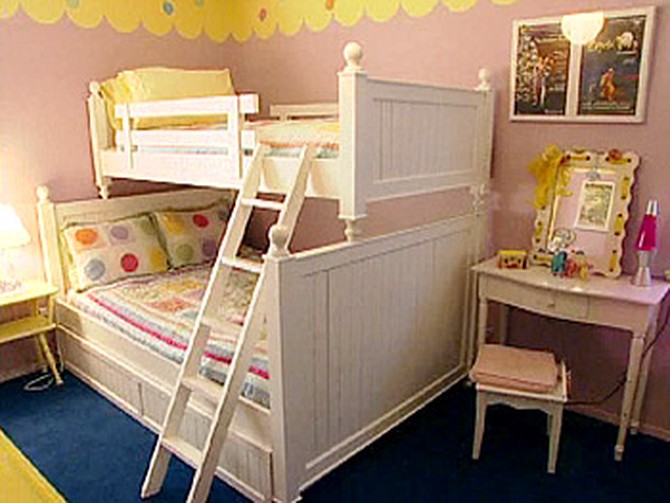
Organize a Kid's Bedroom
Kids learn more from what they see than from what they hear. So if your home is full of clutter, don't be surprised if your kids' rooms are messy. Model the behavior you want from your children!
Quick Tips
Establish zones. Zones help kids understand the concept of everything having a proper place. It also makes it easier for them to tidy the room and take responsibility for their own space. Create zones for your children's favorite activities (reading, art projects, etc.). Then, get creative in labeling these areas, and get your child involved. Make sure the shelving and storage units are the right height for your little one.
Set toy limits. Many homes are completely overrun with toys, stuffed animals, electronics, you name it! Set a limit to how much your child can own. Give them two or three bins for their toys. When the bins are full, no more new toys are allowed until a toy of a similar size is removed and given to charity. This teaches them the joy in giving to others and to value what is important to them.
Set toy routines. Limits help manage clutter, and so do routines. Set a time every day or after every activity for them to put their things away, and make it fun! They will learn about personal responsibility, the fundamentals of organization and how to help with simple chores.
Don't keep every piece of art or schoolwork. How do you pick and choose between what to keep and what to throw away? Make it a ceremony for your child. At the end of the semester, ask your child to pick the best of the best. Pick one to frame and three or four to keep for posterity. File flat artwork or papers away in a file so they have something to look back on later.
Get the best times of year to teach your children how to get organized and when to start getting ready for school.
How-to Videos
Tackle the Toy Box
The Art of Organizing Your Child's Projects
Quick Tips
Establish zones. Zones help kids understand the concept of everything having a proper place. It also makes it easier for them to tidy the room and take responsibility for their own space. Create zones for your children's favorite activities (reading, art projects, etc.). Then, get creative in labeling these areas, and get your child involved. Make sure the shelving and storage units are the right height for your little one.
Set toy limits. Many homes are completely overrun with toys, stuffed animals, electronics, you name it! Set a limit to how much your child can own. Give them two or three bins for their toys. When the bins are full, no more new toys are allowed until a toy of a similar size is removed and given to charity. This teaches them the joy in giving to others and to value what is important to them.
Set toy routines. Limits help manage clutter, and so do routines. Set a time every day or after every activity for them to put their things away, and make it fun! They will learn about personal responsibility, the fundamentals of organization and how to help with simple chores.
Don't keep every piece of art or schoolwork. How do you pick and choose between what to keep and what to throw away? Make it a ceremony for your child. At the end of the semester, ask your child to pick the best of the best. Pick one to frame and three or four to keep for posterity. File flat artwork or papers away in a file so they have something to look back on later.
Get the best times of year to teach your children how to get organized and when to start getting ready for school.
How-to Videos
Tackle the Toy Box
The Art of Organizing Your Child's Projects
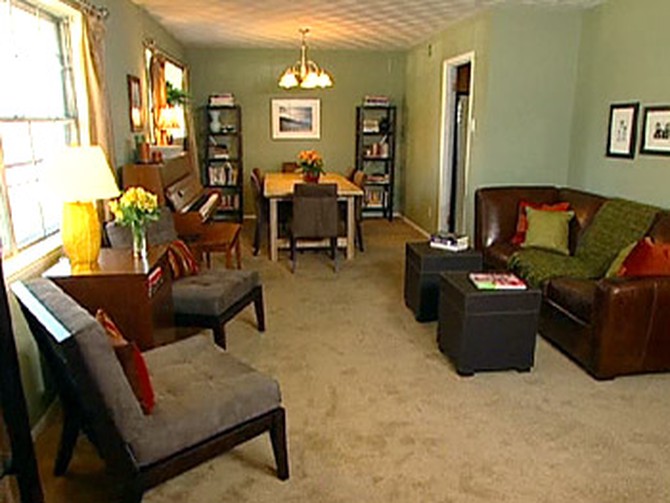
Organize the Family and Living Rooms
The family room—it's a place to watch TV, play games, do homework, pay bills, read magazines, hang out and entertain. The problem is that in being everything to everyone, this room can end up as a catch-all with no focus.
Quick Tips
Establish zones. Talk to your family about how they would like to use the room. Then, gather like things together and place them in specific zones. For example, put DVDs and CDs near the entertainment unit. Magazines belong in a rack next to your favorite chair, and board games go in storage bins next to or under the coffee table where you most often play them.
Organize your entertainment. Make sure all media have a clearly defined area. Then, arrange DVDs into specific categories or genres so any movie is easy to find and put away. Label shelves or storage units so everyone knows that's where they belong.
The ratio rule. Regularly purge your DVD, CD and book collections of the ones you no longer watch using this rule: For every four or five you keep, remove one from your collection. Given them to charity or to family or friends. If it still doesn't fit on your shelves, do the same thing at a lower ratio, like three to one.
Go digital. After purging your CD collection, transfer all your CDs to a computer. If you aren't ready to go digital, put your CDs in binders and discard the jewel cases.
Limit magazine subscriptions. You should have no more than three monthly magazine subscriptions. Seriously assess how many you are reading each month and cut back accordingly.
How-to Videos
Manage Your Magazines
Get in the Zone
Quick Tips
Establish zones. Talk to your family about how they would like to use the room. Then, gather like things together and place them in specific zones. For example, put DVDs and CDs near the entertainment unit. Magazines belong in a rack next to your favorite chair, and board games go in storage bins next to or under the coffee table where you most often play them.
Organize your entertainment. Make sure all media have a clearly defined area. Then, arrange DVDs into specific categories or genres so any movie is easy to find and put away. Label shelves or storage units so everyone knows that's where they belong.
The ratio rule. Regularly purge your DVD, CD and book collections of the ones you no longer watch using this rule: For every four or five you keep, remove one from your collection. Given them to charity or to family or friends. If it still doesn't fit on your shelves, do the same thing at a lower ratio, like three to one.
Go digital. After purging your CD collection, transfer all your CDs to a computer. If you aren't ready to go digital, put your CDs in binders and discard the jewel cases.
Limit magazine subscriptions. You should have no more than three monthly magazine subscriptions. Seriously assess how many you are reading each month and cut back accordingly.
How-to Videos
Manage Your Magazines
Get in the Zone
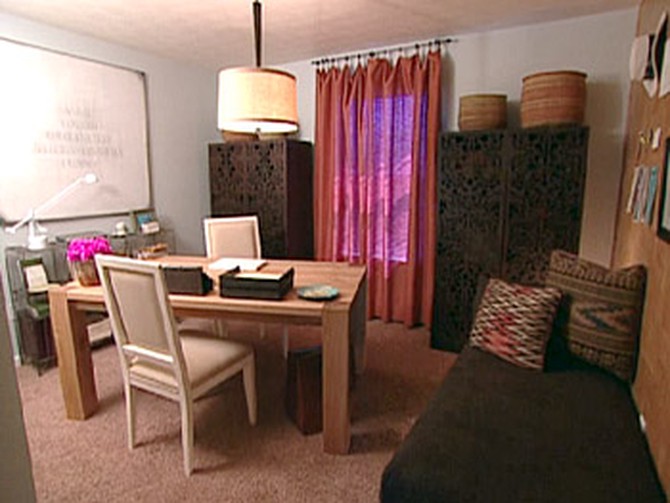
Organize the Home Office
We'd all like the home office to be a model of efficiency, but for many it's a magnet that attracts every piece of paper that comes into the home.
Quick Tips
Create a paperwork zone. Designate places for the main types of paper in these spaces—unopened mail, magazines, bills and receipts, and important personal information. Put mail and bills near each other, along with envelopes, stamps, your checkbook and other items you need regularly. Find out the best time of year to organize your paperwork.
Keep horizontal surfaces clear. Keep your office uncluttered by ensuring that any desk surface, countertop or table is clear of paperwork. If you don't start piles, they can't grow.
Go digital. Organize your computer files, delete old ones regularly and back up important ones. Whenever possible, use the Internet to pay bills, which can help reduce paper clutter.
Minimize junk mail. Treat junk mail like the intruder it is. Get rid of it immediately. To minimize junk mail, contact the Direct Marketing Association at www.dmaconsumers.org to activate the mail preference service or call 888-5OPT-OUT to stop those annoying credit card offers.
Keep track of bills and receipts. Buy a 12-month expanding file, and file all bills or receipts monthly. You'll come back to each one a year later. If you haven't needed it by then, get rid of it!
Maintain a good filing system. A good system can keep anything organized. Suggested categories are: automotive, education, financial, health and medical, home and real estate, insurance, legal, work and taxes. Keep frequently used files handy.
How-to Videos
Junk Your Junk Mail
Quick Tips
Create a paperwork zone. Designate places for the main types of paper in these spaces—unopened mail, magazines, bills and receipts, and important personal information. Put mail and bills near each other, along with envelopes, stamps, your checkbook and other items you need regularly. Find out the best time of year to organize your paperwork.
Keep horizontal surfaces clear. Keep your office uncluttered by ensuring that any desk surface, countertop or table is clear of paperwork. If you don't start piles, they can't grow.
Go digital. Organize your computer files, delete old ones regularly and back up important ones. Whenever possible, use the Internet to pay bills, which can help reduce paper clutter.
Minimize junk mail. Treat junk mail like the intruder it is. Get rid of it immediately. To minimize junk mail, contact the Direct Marketing Association at www.dmaconsumers.org to activate the mail preference service or call 888-5OPT-OUT to stop those annoying credit card offers.
Keep track of bills and receipts. Buy a 12-month expanding file, and file all bills or receipts monthly. You'll come back to each one a year later. If you haven't needed it by then, get rid of it!
Maintain a good filing system. A good system can keep anything organized. Suggested categories are: automotive, education, financial, health and medical, home and real estate, insurance, legal, work and taxes. Keep frequently used files handy.
How-to Videos
Junk Your Junk Mail
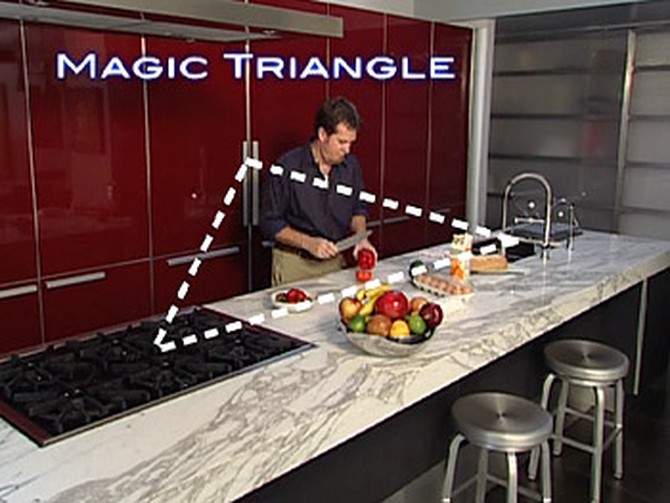
Organize Your Kitchen
The kitchen is the nerve center of any home, but it's also a tough place to keep organized and clean.
Quick Tips
Keep flat surfaces clear. Consider flat surfaces your preparation area—not your storage area! This will keep them clean and accessible.
Establish four main zones. All you need are four main areas: the preparation area, the cooking center, the eating area and the cleanup area.
Work around the "magic triangle." Establish a "magic triangle" in your kitchen between the stove, your refrigerator and your sink. Anything you use most often, keep it in the triangle. Anything you use less often, outside the triangle.
Try the cardboard box test. See what utensils you're really using. Take all the utensils out of your drawers and put them in a cardboard box. For the next month, whenever you use one of these utensils, put it back in the drawer. If after four weeks it's still in the box, you don't need it.
Claim your cupboards. Make use of what you have. Use a lazy Susan, mini step shelves, even back-of-the-door shelving systems to hold extra items.
Check food expiration dates. Every six months, check the contents of your cupboards. Every three months, discard old food or perishables. Also, check your freezer to ensure you aren't keeping food beyond its use-by date.
Never have a junk drawer.
Establish a pantry with a purpose. Pantries are harder to manage than refrigerators. Why? Our pantries are usually chock full of foods we buy because they look good, because they seem like good foods to have on hand or because they're on sale. They're sort of like clothes closets—full of impulse purchases and sales mistakes. Get the golden rules of pantry organization.
Identify clutter foods. Like the boxes full of who-knows-what filling your basement or garage, clutter foods are foods you think you should have in your house but don't really eat. Zero in on the main culprits.
How-to Videos
Establish the Magic Triangle
Weed Out Useless Utensils
Maximize Your Kitchen Storage Space
Control Your Cookbooks
Quick Tips
Keep flat surfaces clear. Consider flat surfaces your preparation area—not your storage area! This will keep them clean and accessible.
Establish four main zones. All you need are four main areas: the preparation area, the cooking center, the eating area and the cleanup area.
Work around the "magic triangle." Establish a "magic triangle" in your kitchen between the stove, your refrigerator and your sink. Anything you use most often, keep it in the triangle. Anything you use less often, outside the triangle.
Try the cardboard box test. See what utensils you're really using. Take all the utensils out of your drawers and put them in a cardboard box. For the next month, whenever you use one of these utensils, put it back in the drawer. If after four weeks it's still in the box, you don't need it.
Claim your cupboards. Make use of what you have. Use a lazy Susan, mini step shelves, even back-of-the-door shelving systems to hold extra items.
Check food expiration dates. Every six months, check the contents of your cupboards. Every three months, discard old food or perishables. Also, check your freezer to ensure you aren't keeping food beyond its use-by date.
Never have a junk drawer.
Establish a pantry with a purpose. Pantries are harder to manage than refrigerators. Why? Our pantries are usually chock full of foods we buy because they look good, because they seem like good foods to have on hand or because they're on sale. They're sort of like clothes closets—full of impulse purchases and sales mistakes. Get the golden rules of pantry organization.
Identify clutter foods. Like the boxes full of who-knows-what filling your basement or garage, clutter foods are foods you think you should have in your house but don't really eat. Zero in on the main culprits.
How-to Videos
Establish the Magic Triangle
Weed Out Useless Utensils
Maximize Your Kitchen Storage Space
Control Your Cookbooks
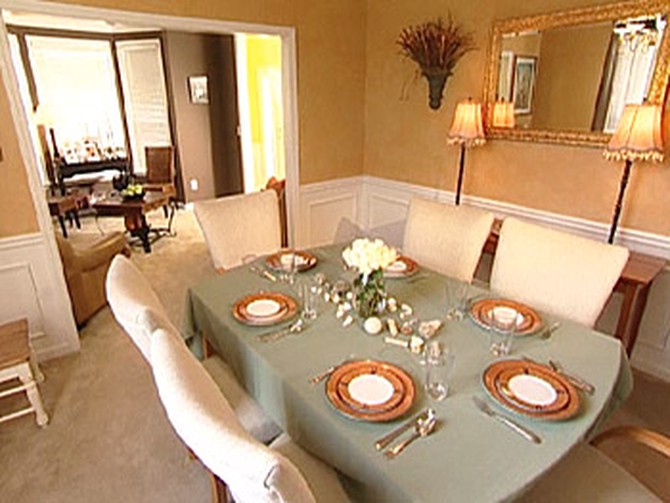
Organize a Dining Room
There's a dining area in every home, whether it's part of the kitchen or a separate area. Regardless, this is where you entertain, not where you store "I'll get to it later" clutter. If you use it for projects, clean up after yourself immediately.
Quick Dining Room Tips
Consider the dining room table sacred. Do not use this large, inviting surface as a catch-all.
Establish the zones. Keep the area free from clutter and also off-bounds to the television and other distractions that stop you from interacting fully with one another. All you need is a clear table and storage space for dishes, formal china and entertaining supplies.
Keep what you use close at hand. Take all the plates and dishes you own and spread them on the table. Do you need and use all of them? Gather matching flatware and glasses together. Discard any that you no longer like or use, as well as any that are chipped or damaged. Place the items you use most within reach. Store large serving platters or anything you use least often on the lowest or highest shelves toward the rear of the cupboard.
Linens and napkins. If possible, keep all your table linens, tablecloths and napkins in your dining room. Assign a drawer or shelf for linen sets so that anyone setting the table or putting things away can see where things belong.
Quick Dining Room Tips
Consider the dining room table sacred. Do not use this large, inviting surface as a catch-all.
Establish the zones. Keep the area free from clutter and also off-bounds to the television and other distractions that stop you from interacting fully with one another. All you need is a clear table and storage space for dishes, formal china and entertaining supplies.
Keep what you use close at hand. Take all the plates and dishes you own and spread them on the table. Do you need and use all of them? Gather matching flatware and glasses together. Discard any that you no longer like or use, as well as any that are chipped or damaged. Place the items you use most within reach. Store large serving platters or anything you use least often on the lowest or highest shelves toward the rear of the cupboard.
Linens and napkins. If possible, keep all your table linens, tablecloths and napkins in your dining room. Assign a drawer or shelf for linen sets so that anyone setting the table or putting things away can see where things belong.
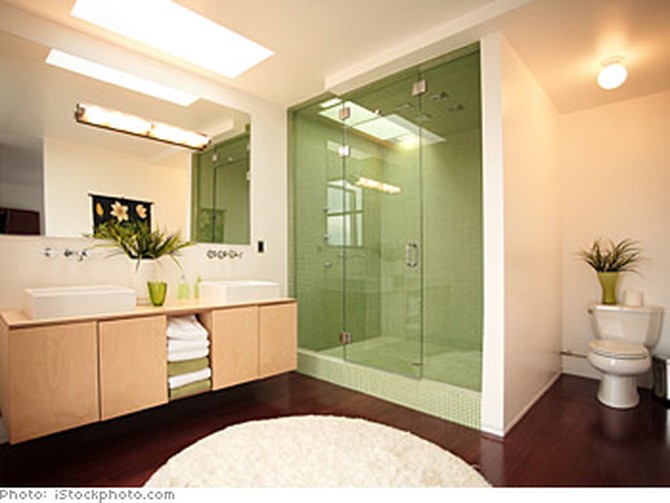
The Bathroom
Recent statistics suggest you spend close to five years of your life in the bathroom. What better reason to make your bathroom the kind of place where you want to spend time?
Quick Tips
Figure out the best zones. If the bathroom is shared, zones can be dictated by person instead of purpose. Give each person a section of storage or a bathroom caddy to keep in a cupboard or their room. Otherwise, use caddies or clear plastic bins to store like things together, such as medicines, haircare and cosmetics.
Keep flat surfaces clear. Cleanliness is extremely important in the bathroom. Steam, moisture and condensation promote mold and mildew. Add clutter and you have all the ingredients for an unhealthy and unsightly room.
Use vertical space. Install hooks or towel rods on the back of the bathroom door for towel storage. Purchase an over-the-toilet cabinet or install shelves to neatly store other bathroom items.
Purge unused products. If those mini shampoo bottles you brought back from vacation last year haven't been used, they never will be. Every six months, check what's in the bathroom and get rid of all bottles or tubes you haven't opened or used in that time.
Check expiration dates. Cosmetics and medications both have expirations dates. Make sure you aren't using them when they are no longer safe.
Quick Tips
Figure out the best zones. If the bathroom is shared, zones can be dictated by person instead of purpose. Give each person a section of storage or a bathroom caddy to keep in a cupboard or their room. Otherwise, use caddies or clear plastic bins to store like things together, such as medicines, haircare and cosmetics.
Keep flat surfaces clear. Cleanliness is extremely important in the bathroom. Steam, moisture and condensation promote mold and mildew. Add clutter and you have all the ingredients for an unhealthy and unsightly room.
Use vertical space. Install hooks or towel rods on the back of the bathroom door for towel storage. Purchase an over-the-toilet cabinet or install shelves to neatly store other bathroom items.
Purge unused products. If those mini shampoo bottles you brought back from vacation last year haven't been used, they never will be. Every six months, check what's in the bathroom and get rid of all bottles or tubes you haven't opened or used in that time.
Check expiration dates. Cosmetics and medications both have expirations dates. Make sure you aren't using them when they are no longer safe.
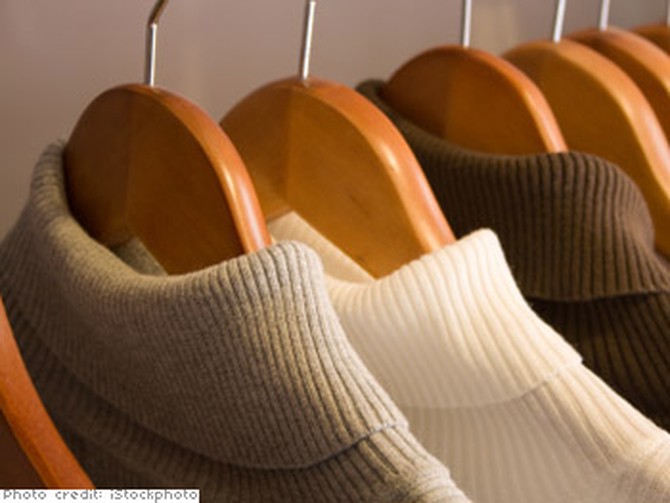
Basements, Attics and Closets
Basements, attics and closets are like black holes for your possessions. The bigger they are, the more impossible it is to find anything. Think about it—if you really treasured that item, you wouldn't have shoved it on a shelf or in a corner to be forgotten. Stop promising you'll use it someday and start clearing some useful storage space for yourself!
Quick Tips for Closets
Follow the 12-month rule. Closets are a ripe environment for clutter. There are always a few pairs of pants or dresses you swear you'll fit into again someday. Or a blouse that you're betting will come back into style. It's time to let go. Sort through everything in your closet. If you haven't worn it in the past year, it's time to donate.
Keep track of your clothing use. An easy way to determine what you're really wearing is to use a simple hanger trick. First, hang all of your clothes with the hangers facing the same way. After you wear and wash an item, rehang it—this time with the top of the hanger facing the opposite way. If certain pieces never get turned around, then it's time to consider letting them go.
Quick Tips for Basements, Attics and Other Storage Areas
Start slow. It's taken months or years to build up the clutter. Organize one section at a time. Find out the best times of year to clean out the black holes in your home and more.
Collections and momentos. Ask yourself if those items stored in a trash bag or old box in the garage are really that important to you. If they aren't honored and respected, maybe they are really clutter that you do not need to hold on to. If you truly treasure items, display them proudly and properly in your home.
Streamline. If you haven't used it in a year, get rid of it.
Get stuff off the floor. Once items start spreading across the floor, it's almost impossible to keep them under control. Use vertical space and shelving units to increase your storage space.
Make the most of your space. Basements and attics are sometimes used for many purposes at once—storage, crafting, a place to watch television, etc. Once you've cleared away some of the clutter, decide what you're really going to be using your space for and organize accordingly. Use this room function chart as a good tool to start planning.
Quick Tips for Closets
Follow the 12-month rule. Closets are a ripe environment for clutter. There are always a few pairs of pants or dresses you swear you'll fit into again someday. Or a blouse that you're betting will come back into style. It's time to let go. Sort through everything in your closet. If you haven't worn it in the past year, it's time to donate.
Keep track of your clothing use. An easy way to determine what you're really wearing is to use a simple hanger trick. First, hang all of your clothes with the hangers facing the same way. After you wear and wash an item, rehang it—this time with the top of the hanger facing the opposite way. If certain pieces never get turned around, then it's time to consider letting them go.
Quick Tips for Basements, Attics and Other Storage Areas
Start slow. It's taken months or years to build up the clutter. Organize one section at a time. Find out the best times of year to clean out the black holes in your home and more.
Collections and momentos. Ask yourself if those items stored in a trash bag or old box in the garage are really that important to you. If they aren't honored and respected, maybe they are really clutter that you do not need to hold on to. If you truly treasure items, display them proudly and properly in your home.
Streamline. If you haven't used it in a year, get rid of it.
Get stuff off the floor. Once items start spreading across the floor, it's almost impossible to keep them under control. Use vertical space and shelving units to increase your storage space.
Make the most of your space. Basements and attics are sometimes used for many purposes at once—storage, crafting, a place to watch television, etc. Once you've cleared away some of the clutter, decide what you're really going to be using your space for and organize accordingly. Use this room function chart as a good tool to start planning.

The Garage and Tool Shed
Have you been unable to park in your own garage for years? Garages and storerooms are often "stuff cemeteries." Just because you have the space doesn't mean you have to fill it. But genuine storage can take place if you're smart about it. In fact, you've already mastered some of these rules if you've already worked on your closets and basement!
Quick Tips
Start slow. It has taken months or years for it to become cluttered. Organize one section at a time.
Streamline. If you haven't used it in a year, get rid of it.
Get stuff off the floor. Once items start spreading across the floor, it's almost impossible to keep them under control. Use vertical space and shelving units to increase your storage space.
Jump in at the deep end! Once a year, drag everything out of your garage. Get the whole family involved. Commit to getting rid of 50 percent of what is in the garage. Go through all boxes, bins, storage cupboards. Be brutal!
Divide your garage into zones. Organize items into like groups—garden supplies, tools, camping supplies, sporting goods, seasonal items and so on. Use appropriate containers and labeling to identify specific items. Color-coding each zone also helps!
Tools. Empty your toolbox and get rid of duplicates. Then, throw away those loose nails and screws and old hardware you'll never use. Get rid of tools and materials you acquired for specific projects that are finished or will never get done.
Paint. Check all paint cans to see if the paint is still usable. As you open each can, label it with a number and paint a small piece of paper next to it. Then, match the paints to the rooms in your home and create a paint guide. Get rid of any paints that no longer match your home. Check with your local city hall to find the best way to discard old paint.
Seasonal items. Every year, reassess whether you need to keep certain items. If you didn't use that glow-in-the-dark skeleton for Halloween this year, will you use it next year? Find out when to start sorting through your seasonal items.
Be aware of what you're storing. Do not store highly flammable items like kerosene, paint thinner or gasoline unless they are in a tightly sealed container in a closed—and preferably locked—cupboard. Ensure that your garage, like the rest of your home, is fitted with smoke detectors and keep a fire extinguisher handy.
Look to the stars. Consider using the ceiling of your garage for storage. Any hardware store carries a wide variety of hooks that can be used to hang bikes, sporting gear or even gardening tools. Items like storm windows or summer window screens can easily be stored on ceiling rafters.
Quick Tips
Start slow. It has taken months or years for it to become cluttered. Organize one section at a time.
Streamline. If you haven't used it in a year, get rid of it.
Get stuff off the floor. Once items start spreading across the floor, it's almost impossible to keep them under control. Use vertical space and shelving units to increase your storage space.
Jump in at the deep end! Once a year, drag everything out of your garage. Get the whole family involved. Commit to getting rid of 50 percent of what is in the garage. Go through all boxes, bins, storage cupboards. Be brutal!
Divide your garage into zones. Organize items into like groups—garden supplies, tools, camping supplies, sporting goods, seasonal items and so on. Use appropriate containers and labeling to identify specific items. Color-coding each zone also helps!
Tools. Empty your toolbox and get rid of duplicates. Then, throw away those loose nails and screws and old hardware you'll never use. Get rid of tools and materials you acquired for specific projects that are finished or will never get done.
Paint. Check all paint cans to see if the paint is still usable. As you open each can, label it with a number and paint a small piece of paper next to it. Then, match the paints to the rooms in your home and create a paint guide. Get rid of any paints that no longer match your home. Check with your local city hall to find the best way to discard old paint.
Seasonal items. Every year, reassess whether you need to keep certain items. If you didn't use that glow-in-the-dark skeleton for Halloween this year, will you use it next year? Find out when to start sorting through your seasonal items.
Be aware of what you're storing. Do not store highly flammable items like kerosene, paint thinner or gasoline unless they are in a tightly sealed container in a closed—and preferably locked—cupboard. Ensure that your garage, like the rest of your home, is fitted with smoke detectors and keep a fire extinguisher handy.
Look to the stars. Consider using the ceiling of your garage for storage. Any hardware store carries a wide variety of hooks that can be used to hang bikes, sporting gear or even gardening tools. Items like storm windows or summer window screens can easily be stored on ceiling rafters.
Published 01/01/2006

